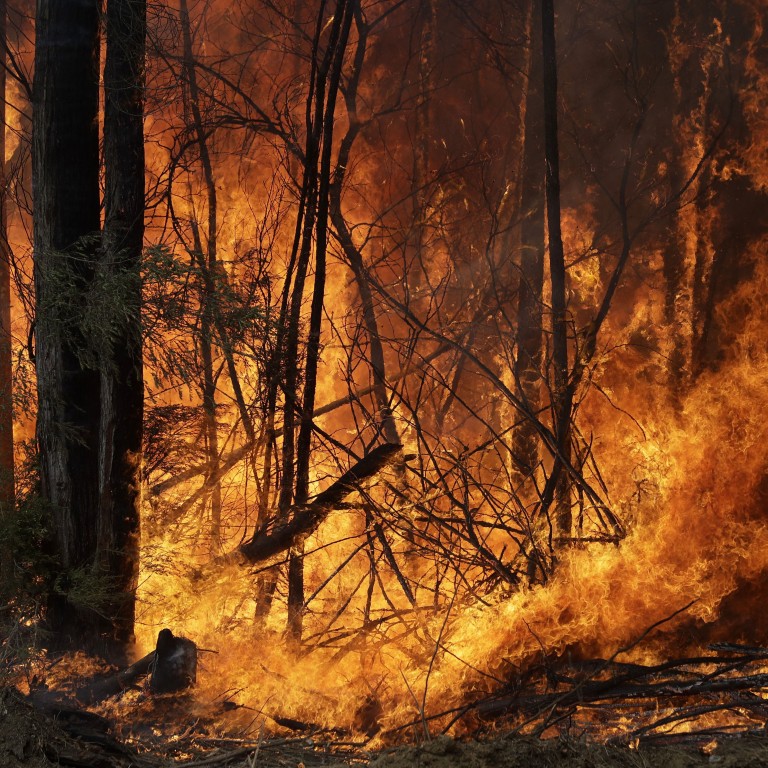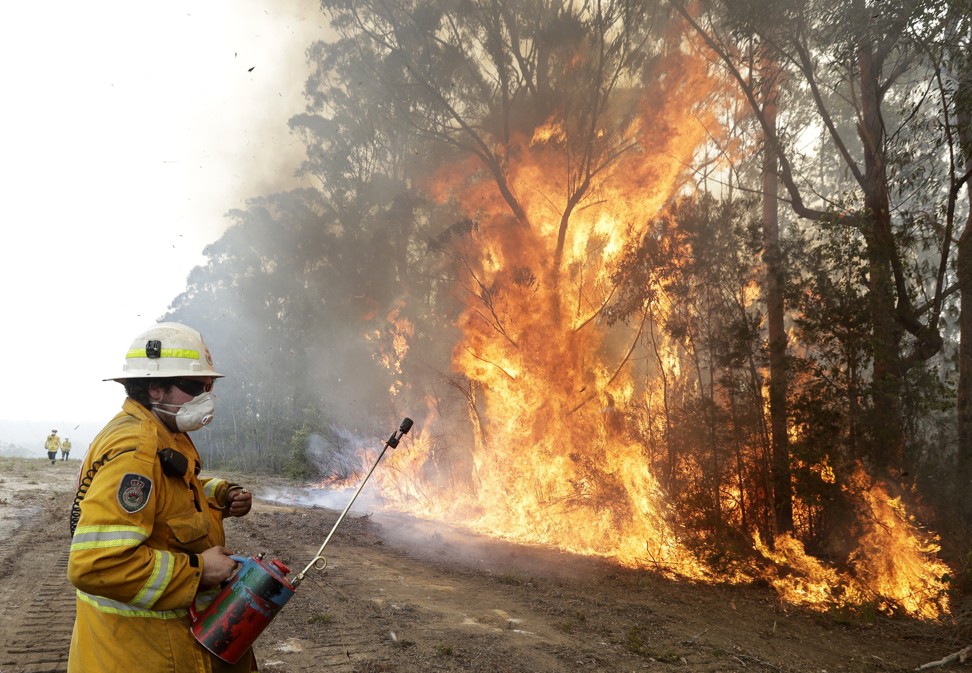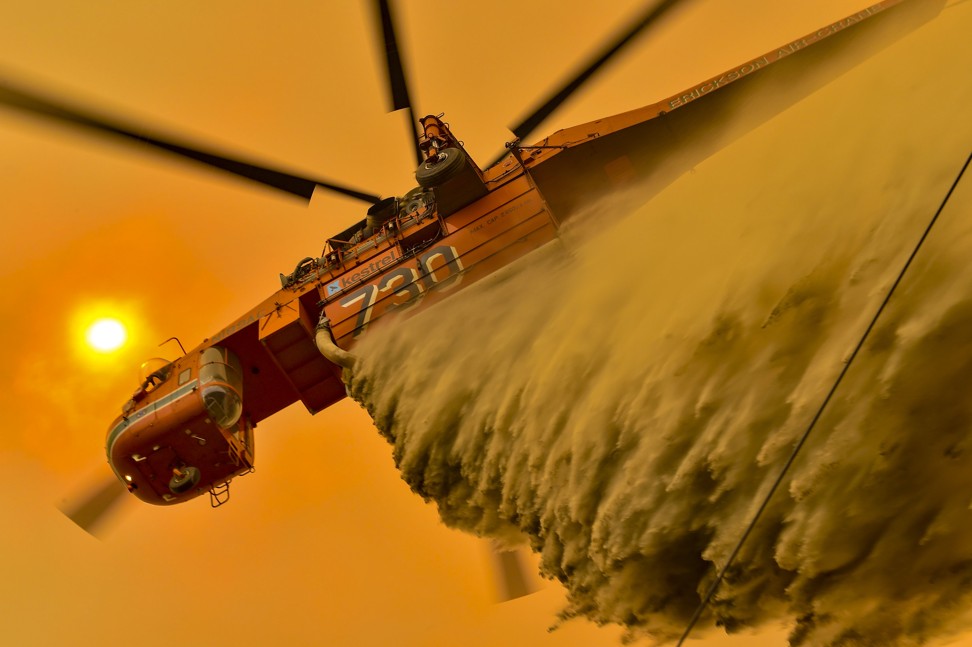
‘Soul destroying’: Australia’s bush fires are about to ‘take off again’, scientists warn
- Don’t be fooled by the brief lull – authorities warn more ‘extreme fire weather’ is on its way, fuelled by drought, high temperatures and winds
- Since September, 24 people have died, nearly 2,000 homes have been destroyed and an area of land roughly the size of Scotland has been burned
A bush fire came so close to destroying Kate Shone’s home on New Year’s Eve that the flames left singed leaves in her backyard.
“I haven’t unpacked my car. People have been told to prepare themselves again,” she said. “We have apps on our phones that show us where the fires are and the wind direction.”
Shone, who lives in Swan Reach, a small rural town about 300km (186 miles) east of Melbourne, is among the many Australians bracing for the worst in the coming days, as they refuse to be lulled into a false sense of security by the improved conditions since Sunday that have allowed blocked roads to be reopened, evacuation orders lifted and stranded people removed to safety, including 400 who were airlifted out of the small tourist town of Mallacoota.
After downgrading all emergency-level blazes at the start of the week, authorities have now warned that wildfires will “take off again” from Friday as the mercury rises above 40 degrees Celsius (104 degrees Fahrenheit) in the country’s two most populous states.
Mark Howden, director of the Climate Change Institute at the Australian National University, said the forecasts for the week’s end pointed to more “extreme fire weather”, fuelled by “drought, high temperatures, dry air and strong winds”.
“If there is a source of ignition – from dry lightning, accident or deliberately – then the consequent fire may be very serious, similar to those a week or so ago, but perhaps not quite as severe.”
Australia to shoot up to 10,000 thirsty camels as drought worsens
Since October, Australia’s raging bush fires have killed 26 people, destroyed nearly 2,000 homes and left an area of land roughly the size of Scotland – about 8 million hectares (19.8 million acres) – scorched and blackened.
More than 70,000 people were evacuated in Victoria alone last week after state authorities declared a “state of disaster”.
Victorian Emergency Management Commissioner Andrew Crisp on Tuesday called on residents to make a plan to deal with resurgent fires and be prepared to leave their homes if necessary.

“We cannot afford to become complacent,” he said. We must remain vigilant.”
Travis Milestone, whose house in Sarsfield, Victoria, was burning down as revellers elsewhere welcomed in the new year, is ready to “drive in the opposite direction” if fire threatens the temporary accommodation where he has been staying with his partner.
“We will go somewhere safe straight away without hesitation,” he said. “It’s been soul destroying.”

Scientists warn that the extreme fires Australia is experiencing are made more likely by the changing climate, but Morrison has dismissed calls to strengthen his climate policy, insisting the country is on target to meet its commitments under the Paris Agreement to reduce emissions by 26 per cent by 2030.
“The crisis continues, nature and climate have the upper hand,” said David Bowman, a bush fire expert at the University of Tasmania. “We Australians are being tested again.”
Some of the communities hardest-hit by fire last month, such as Corryong, Walwa and Cudgewa in Victoria, are among those most endangered by the weekend’s looming spike in temperatures.
Marita Albert, who operates a small farm outside Corryong, returned from a trip overseas on Sunday to find her fields burned completely black but her house miraculously intact.
“The blinds on the back veranda are burned right through,” she said. “It didn’t miss the house, it just didn’t burn the house.”
Albert, who was forced to euthanise some of her animals because of the fire and has to use a generator for electricity while the town waits to be reconnected to the power grid, said she did not believe there was anything left to burn around her home but feared for others in the town, which was hit by two fires in less than a fortnight and now faces the risk of merging fires that continue to rage nearby and in neighbouring New South Wales.

“I still have friends who have properties who could be impacted by a new event,” she said. “I am worried about what’s going to happen to them over the next few days.”
Anxiety is running high all across the tight-knit community about what could happen next, Albert said.
“We’re going to get through it but emotionally it’s a huge, huge devastation and loss,” she said. “It’s a lot of sleepless nights for a lot of people. We’re all really doing one day at a time.”

